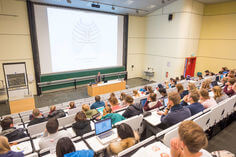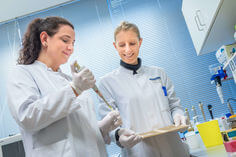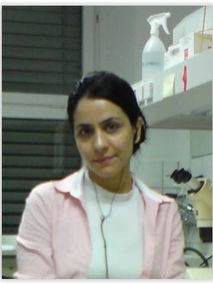Neuroanatomie - Hatami
Research summary
Treatment options for Alzheimer’s disease
We are employing neuronal, embryonic and induced pluripotent stem (iPS) cells for studying the molecular mechanisms of brain development and pathology for devising novel stem cell-derived therapies.
The hippocampus and its dentate gyrus is the main relay station in the brain responsible for learning and memory as well as spatial navigation. During the development of Alzheimer’s disease, shrinkage is especially severe in the hippocampus. We could envision specific transplantation of hippocampal neurons as a therapeutic option.
Our research team has been pioneering the understanding of hippocampal dentate gyrus neuronal development and neuronal networking. (Front Cell Neurosci. 2018; Mol Cell Neurosci. 2010; J Biol Chem. 2010; Dev Neurosci. 2007; J Neurosci. 2004; Nat Cell Biol. 2004; Trends Neurosci. 2001)
We are analyzing the differentiation of pluripotent stem cells into hippocampal stem and progenitor cell types, which could provide the most important cell type for the regeneration of dementia such as Alzheimer’s disease.
Recently, 3D culture models termed, “cerebral organoids”, have been developed which recapitulate aspects of brain development, including the organization of discrete cortical regions. These organoids also include organized germinal zones, and both radial and tangential migration of cortical neuron subpopulations and cortical organizers. They are not patterned by externally added growth factors or morphogens, suggesting that their development relies purely on self-organization by building neuronal microenvironments. Although the development of dorsal forebrain structures such as the hippocampus is still limited in these organoids, they build a foundation for designing the histological architecture of the hippocampus and the dentate gyrus. Patient specific hippocampal organoids could be used as test platforms to screen pharmacological libraries for therapeutic applications.
During development, neuronal stem cells make fate decisions and differentiate into various mature cell types within a complex brain structure. During regeneration, differentiated cells might acquire a stem cell state and re-differentiate along multiple lineages. Single-cell genomics including PCR and sequencing provides a set of powerful methods to illuminate the intermediate states that cells go through during these transitions of cellular identities.
We could identify that the combination of central dentate gyrus transcription factors contros denate gyrus granule neuron differentiation in vitro. Furthermore, it became obvious that the combination of a dentate gyrus specific growth factor cocktail and transcription factors will lead to a significant differentiation of dentate gyrus granule neurons. These neurons could now be generated from pluripotent stem cells from healthy patients with neurodegenerative diseases and be screened for therapeutic strategies.
It is very difficult to conduct stem cell research in the frame of governmental grant applications. To establish and direct this kind of research to the clinic, we are currently looking for industrial corporations and private sponsors. Could you imagine becoming a sponsor for our project and thus enhance medical options for patients suffering from neuro-generative diseases?




